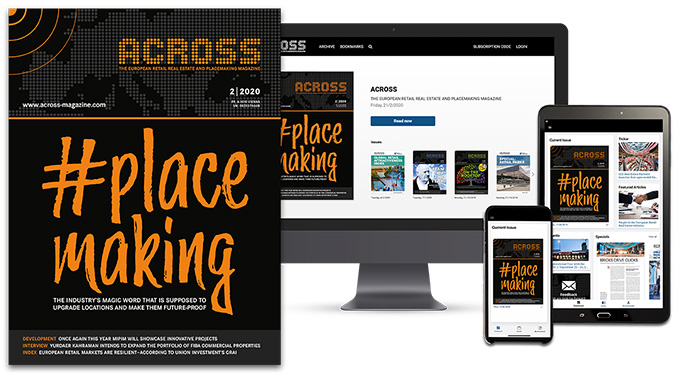Imagine stepping into an outlet center and instantly feeling the thrill of discovery. Shoppers are guided to discover brands, locate the best deals, and navigate the space effortlessly. Every corner is designed to guide without overwhelming, ensuring the experience feels natural, effortless, and engaging.
But beyond functionality, the space should captivate with elements of surprise—an eye-catching feature or an Instagram-worthy installation adds that “wow” factor. People stop, snap a photo, and share the experience with friends. It’s more than just shopping; it’s creating memories worth sharing.
Visual merchandising is not about aesthetics; it is a business strategy. It shapes consumer behavior, optimizes space, and directly impacts sales performance. More than just an artistic discipline, it is a commercial tool that drives engagement, increases dwell time and enhances store navigation.
Retail spaces must go beyond static displays and generic signage. A well-executed VM strategy orchestrates movement, builds anticipation, and influences purchasing decisions. Every layout, display, and signage choice must reinforce the center’s identity while ensuring a seamless, intuitive experience.
From the first impression at the entrance to the smallest design elements in-store, every detail must be curated to enhance engagement, drive sales, and create a shopping experience that customers want to return to.


ENGAGING THROUGH EXPERIENCE
Think of an outlet center as a theater stage. The space sets the atmosphere, builds the story, and enhances the experience, but it should never outshine the actors. The brands are true stars, and the center exists to elevate them.
Customers don’t come to admire the space but live the story. And that story must always lead them back to the stores. To succeed, the focus must be on connecting with customers and enhancing their experience rather than simply pushing sales. An example of this is Jungle Night, one of NEINVER’s signature events, celebrated twice a year across the entire portfolio, and that has redefined the concept of promotion by transforming outlet centers into an adventure-filled experience. Life-size wild animal displays are scattered around the center, encouraging customers to explore and discover different stores. The space became Instagrammable, driving social media exposure. This playful and interactive approach generates social media buzz and increases footfall and sales. For instance, Jungle Night’s Spring 2024 edition sales figures were up 38% on 2023’s edition, demonstrating how a well-executed design strategy can drive engagement and revenue.
UNDERSTANDING THE SHOPPER’S PSYCHOLOGY
For outlet shoppers, shopping isn’t just about buying; it’s about the thrill of the hunt. Scoring that perfect deal feels like a victory. The design must support this mindset from the moment customers arrive. Eye-catching displays and signage should spark curiosity. Once inside, the hunt begins. Communication must not overwhelm but differentiate.
Not all spaces need to convey the same message, nor do all customers require the same level of information. Access points should create expectations, corridors should guide without overwhelming, and shop windows should seduce rather than explain. The space should flow naturally, making finding hidden treasures and exploring different zones easy. When key areas communicate the essential instead of the obvious, the customer experience improves.


THE FUTURE OF OUTLET CENTERS: A HOLISTIC APPROACH TO DESIGN
In the future, we will see more blending of physical design with digital innovation and sensory experiences. Emerging technologies like augmented reality, AI-driven personalized experiences, and interactive screens will transform how customers shop. However, technology should amplify discovery, not turn stores into digital interfaces.
For an outlet center to truly engage shoppers, it must leverage what makes physical retail unique—exploration, sensory interaction, and emotional connection. Many retailers have tried to merge online and offline by adding screens, QR codes, and digital promotions in-store. The assumption is that replicating e-commerce in physical spaces would increase engagement. Instead, it often disrupts the shopping flow, creating digital noise that competes with the experience rather than enhancing it. The mistake is treating online and on-site as identical rather than complementary. Online excels in convenience and personalization, while onsite shopping involves discovery and interaction.
At NEINVER, we are researching how to adapt digital solutions to reinforce in-store exploration. Our approach includes adaptive signage, interactive way-finding, and realtime content recommendations. As AR and VR evolve, they will enrich, not replace, the thrill of in-person shopping.
At the same time, sustainability is becoming a core part of the design. Modular and reusable materials allow spaces to be refreshed without excessive waste, ensuring a modern look while reducing waste and enabling cost-effective solutions. This holistic approach sets the stage for outlets that are as forward-thinking as they are welcoming.
The challenge for outlet centers is staying ahead of shifting expectations. What feels fresh today may seem outdated tomorrow. That’s why continuous innovation in visual merchandising and experience design is essential. A space that evolves keeps customers coming back, making each visit feel like a discovery.

Montse Ortega
Montse Ortega is Head of Visual Merchandising & Experience at NEINVER






